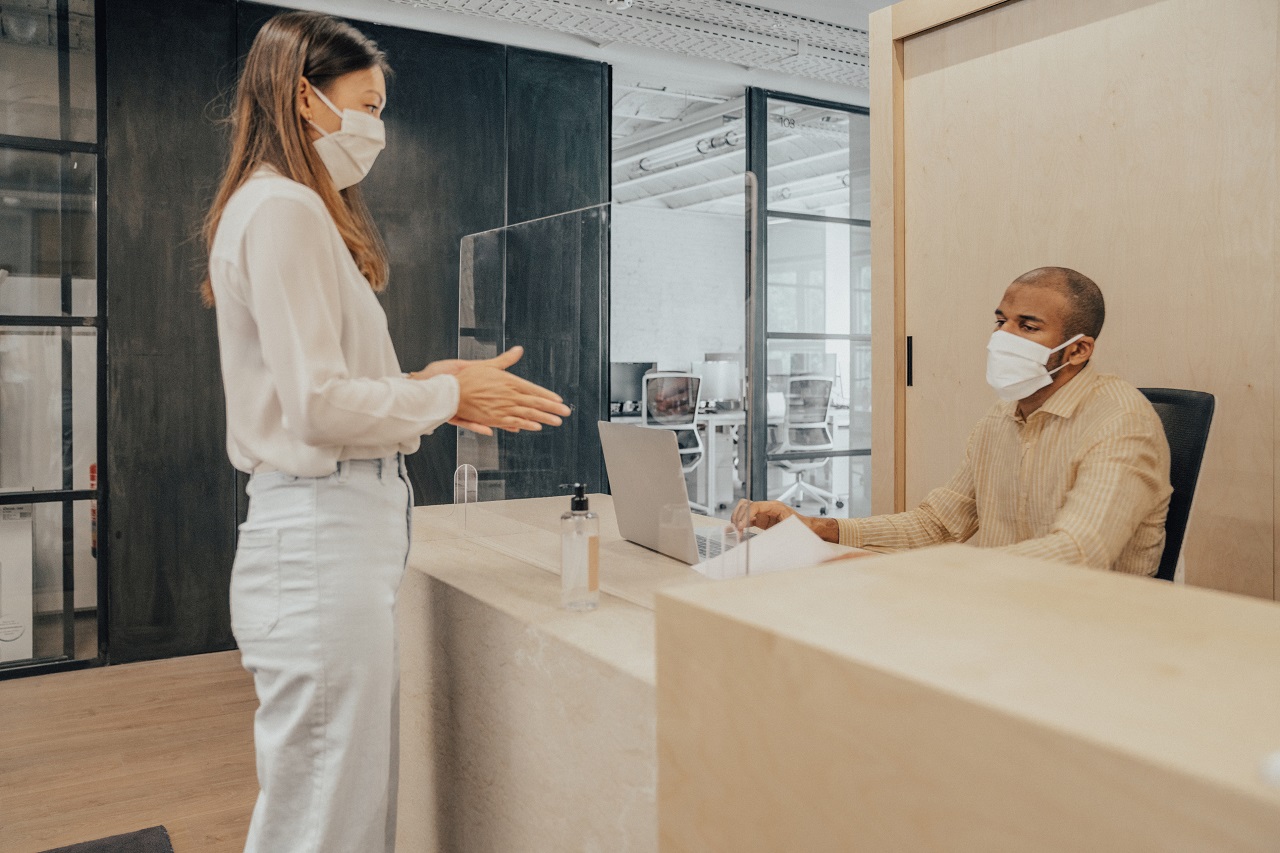COVID-19 has changed just about every facet of life — and that includes the very architecture that surrounds us. As remote work and virtual gatherings have become the norm, architects and designers are reevaluating the ways in which they design communal spaces.
In particular, offices have proven challenging as architecture firms address questions like which employees will have a desk in the office, and what will the capacity of the office be?
For some firms, the answer is not in reducing the number of desks in the office, but in making sure every employee has their own space to work from. Hot desking (the practice of having employees share workspaces with others and not assigning specific desks to employees) is unlikely to regain favor anytime soon, as workers are hyper-aware of contagions and the potential risk factors of sharing a space with others.
To minimize contact, offices and reception desks are now being designed with food delivery hubs. With the spike in food delivery services during the pandemic, creating designated spaces for drop-offs minimizes both the potential risks and the hassle of meeting a delivery driver.
Additionally, new offices are being designed with more flexible workspaces for employees to take advantage of, including phone booths, huddle and conference rooms and outdoor terraces with Wifi access.
The appeal of more outdoor space has also spilled over into the design of new apartment buildings, as units are being designed with more outdoor spaces for residents. Additionally, some design firms are working to design larger units for the benefit of residents, although this approach does cut into profits.
One thing both office and residential design have in common is their new source of inspiration — healthcare facilities. In the past, many design firms had turned to the hospitality industry for their inspiration, focusing on comfort and aesthetics. These days, it’s the opposite, as commercial and residential architects prioritize health and sanitation.
For many, this means increased investment in HVAC and air filtration devices. Though not the most exciting development, these fixtures are effective and increase peace of mind for those in the building. Additionally, antibacterial surfaces and easy-to-sanitize materials, like tile and porcelain have also seen an increase in popularity.
No matter how long the pandemic lasts, its impacts will be felt for some time. Among the long-term changes, the design of our homes and offices will also be impacted for the foreseeable future.
This article was originally posted on Bisnow by Jon Banister.

 Facebook
Facebook
 X
X
 Pinterest
Pinterest
 Copy Link
Copy Link


